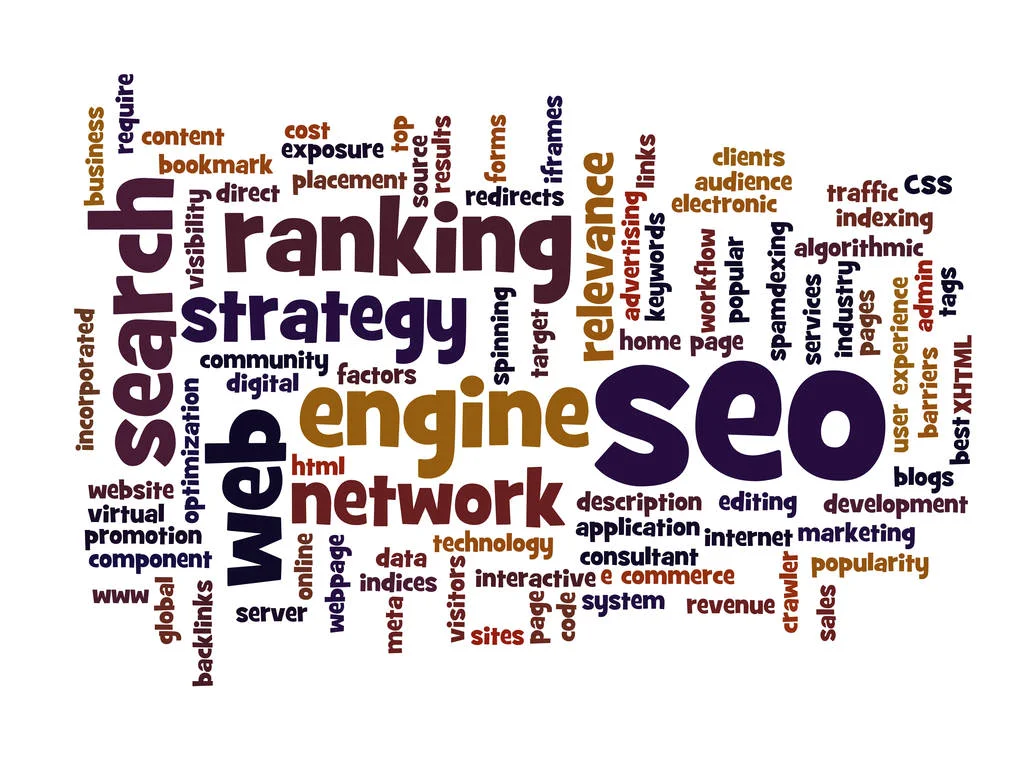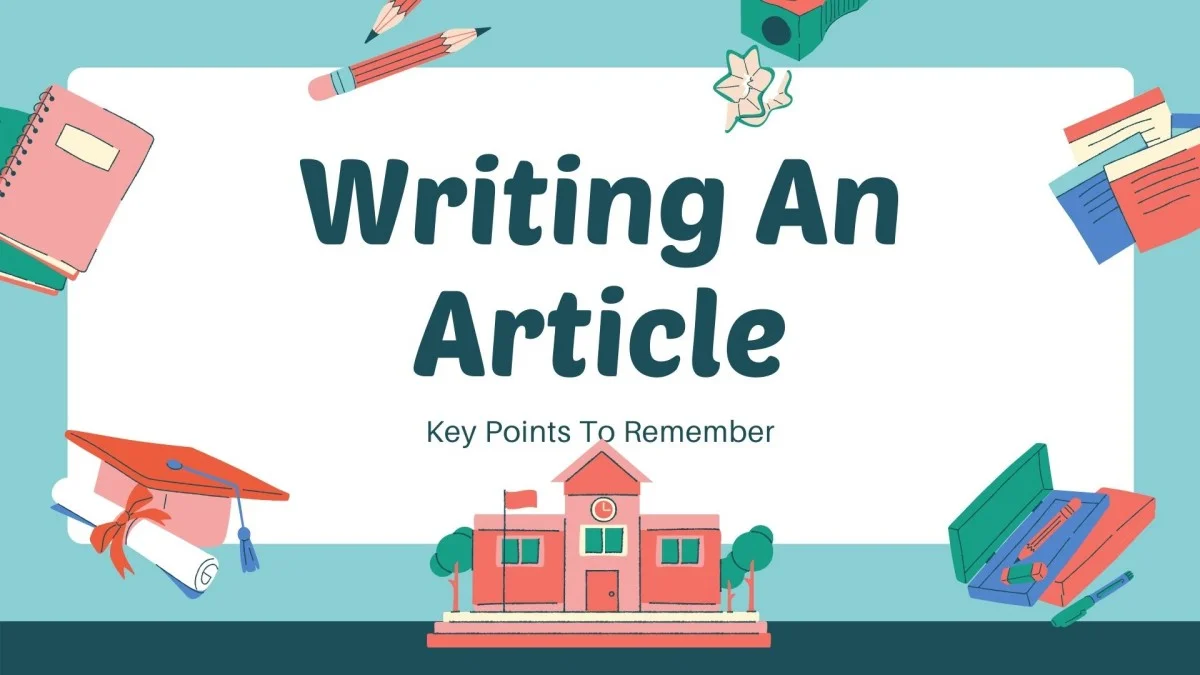Writing an article might seem like a straightforward task, but behind every compelling piece is careful planning, research, and strategy. Whether you’re a seasoned writer or a beginner looking to improve your craft, there are key considerations that can make the writing process smoother and more effective. Understanding these essential factors will help you write articles that resonate with your audience, convey your message clearly, and achieve your goals—whether that’s increasing engagement, boosting SEO, or simply sharing valuable information.
In this article, we’ll break down the things you should remember before starting your next piece. From audience analysis to content structure, mastering these tips can set you on the path to writing successful and impactful articles.
1. Understand Your Topic Thoroughly

Before putting pen to paper (or fingers to keyboard), having a comprehensive understanding of your topic is absolutely critical. Writing without a clear grasp of the subject can lead to content that feels shallow, uninformed, or irrelevant. Here’s how you can ensure you’re well-prepared:
Steps to Deepen Your Understanding
- Research Extensively
- Dive into trusted resources such as scholarly articles, industry reports, authoritative websites, and news outlets.
- Use search engines effectively by exploring variations of your topic keywords to uncover hidden gems of information.
- Watch videos, attend webinars, or listen to podcasts for additional insights and expert perspectives.
- Break Down the Topic
- Identify the key components or subtopics. For instance, if your topic is “Digital Marketing Trends,” focus on aspects like AI in marketing, social media trends, and emerging tools.
- Create a mind map or outline to visualize how the various aspects of your topic interconnect.
- Understand Your Audience
- Ask yourself: Who am I writing for? Are they beginners or industry experts? Tailor your research and writing style to match their level of understanding and expectations.
Why Research Is Crucial
- Builds Authority: In-depth research equips you to write confidently and authoritatively, making your content more credible and trustworthy.
- Fills Knowledge Gaps: By exploring what’s already out there, you can identify missing pieces of information and cover them in your content, offering something fresh and unique.
- Supports Claims with Evidence: Using data, statistics, and examples strengthens your arguments and lends credibility to your content.
- Prevents Errors: Research helps you avoid inaccuracies that can harm your reputation or mislead your audience.
Tips to Simplify Research
- Use specialized tools like Google Scholar for academic content or Statista for statistics and industry data.
- Use AI tools to summarize lengthy articles and highlight key points.
- Bookmark reliable websites for quick access during content creation.
- Organize your findings in tools like Notion, Evernote, or Google Docs for easy reference.
Benefits of Deep Understanding
- Engaging Content: Readers are more likely to stay engaged when the content demonstrates expertise and answers their questions comprehensively.
- SEO Advantages: Well-researched, detailed content is more likely to rank highly on search engines, attracting more organic traffic.
- Establishes Trust: Your audience will view you as a reliable source of information, which encourages loyalty and repeat visits.
Pro Tip:
When researching, always verify the credibility of your sources. Cross-reference data and ensure your information is up-to-date, especially in rapidly changing fields.
Committing to thorough research and developing a deep understanding of your topic will set a strong foundation for creating informative and impactful content.
2. Know Your Audience Inside Out

Creating content that resonates with your readers starts with truly understanding them. When you know your audience’s preferences, challenges, and goals, you can tailor your message to meet their needs. This understanding shapes every aspect of your writing—from tone and language to structure and calls to action.
Why Audience Awareness Matters
- Boosts Engagement: Content that aligns with your audience’s interests captures their attention and keeps them invested.
- Enhances Relatability: Addressing specific challenges or answering frequently asked questions fosters a deeper connection with your readers.
- Drives Action: When you deliver content that meets your audience’s needs, they are more likely to take the next step, whether that’s subscribing, clicking a link, or making a purchase.
How to Identify Your Audience
- Define Your Target Group:
- Consider demographics like age, location, occupation, and education level.
- Understand psychographics such as values, interests, and behavior patterns.
- Analyze Your Audience’s Needs:
- What problems are they trying to solve?
- What questions do they frequently ask?
- Use Analytics and Feedback:
- Study website analytics, social media insights, and survey data to gather direct feedback on your audience’s needs.
How Audience Awareness Shapes Your Article
- Tone: Professionals should use formal language and in-depth analysis.
- For a casual or younger audience, adopt a conversational tone and use relatable examples.
Structure:
- Professionals may prefer detailed articles with headings and data-backed points.
- Casual readers often prefer short paragraphs, bullet points, and visual aids for easier consumption.
Key Benefits of Understanding Your Audience
- Improved Readability: When content is tailored, it feels personal and relevant, making it easier to understand.
- Increased Loyalty: Readers are more likely to return to a site that consistently addresses their needs and interests.
- Higher Conversions: By addressing specific pain points, your content can directly lead to desired actions, like purchases or sign-ups.
Quick Tips to Simplify Audience Research
- Create audience personas that represent different reader types.
- Use tools like Google Analytics, BuzzSumo, or HubSpot to gather audience insights.
- Monitor your competitors’ content to identify trends and gaps in addressing audience needs.
By prioritizing your audience’s preferences and challenges, you ensure your content strikes the right chord, keeping readers engaged and driving meaningful results.
3. Plan Your Structure for Maximum Impact

A well-structured article is the backbone of engaging, reader-friendly content. A clear and organized framework enhances readability, ensures a logical flow, and keeps your audience hooked from start to finish. Here’s how you can plan your article’s structure effectively:
1. Craft a Captivating Introduction
- Grab Attention Immediately: Start with an intriguing question, a surprising fact, or a relatable anecdote.
- Set the Context: Briefly explain the topic and its relevance to the reader.
- Preview the Value: Let readers know what they will learn or gain by reading the article, sparking their curiosity to continue.
2. Divide Content Into Clear Sections with Subheadings
- Guide the Reader: Use descriptive subheadings to break your content into manageable chunks. This provides a roadmap and makes the article skimmable.
- Organize Logically: Ensure sections flow naturally from one to the next, maintaining a straightforward narrative throughout.
- Optimize for SEO: Use keywords in subheadings to improve search visibility while enhancing readability.
3. End with a Strong Conclusion
- Summarize Key Points: Recap the main takeaways in a concise and impactful way.
- Incorporate a Call-to-Action (CTA): Encourage readers to take the next step, whether it’s exploring related content, leaving feedback, or applying what they’ve learned.
4. Bulleted and Numbered Lists
- Highlight Key Takeaways: Use lists to present important information or actionable tips in a concise, visually appealing format.
- Enhance Readability: Lists make it easier for readers to scan and retain key points.
- Keep it Consistent: Use parallel structure within lists for better comprehension.
5. Use Visual Cues to Enhance Structure
- Add Graphics or Images: Break up large blocks of text and visually support your content.
- Include Bold or Italics: Highlight essential points or keywords to draw attention.
- Insert Quotes or Statistics: Make your content more engaging and credible by incorporating expert insights or data.
Why Planning Your Structure Matters
- Improves Engagement: A logical and appealing structure keeps readers on the page longer.
- Boosts SEO: Clear subheadings and well-organized sections are not only reader-friendly but also search-engine-friendly.
- Saves Time: Pre-planning helps streamline the writing process, allowing you to focus more on crafting high-quality content.
Quick Tips to Simplify Structure Planning
- Create an outline before writing to organize your thoughts.
- Use tools like Trello or Notion to brainstorm and arrange ideas.
- Study well-structured articles in your niche for inspiration.
By planning your structure with intention and care, you set the stage for a polished, impactful article that grabs attention, communicates effectively, and leaves a lasting impression.
4. Consider SEO: Optimize Your Content for Better Visibility

In the competitive digital landscape, ensuring your content is discoverable is just as important as creating it. Search Engine Optimization (SEO) bridges the gap between your audience and your content by helping your articles rank higher in search engine results. To achieve this, you need a solid SEO strategy from the outset. Here’s how to optimize your content effectively:
1. Conduct Comprehensive Keyword Research
- Identify High-Ranking Keywords: Use tools like Google Keyword Planner, SEMrush, or Ahrefs to find relevant and high-performing keywords.
- Balance Search Volume and Competition: For better ranking chances, choose keywords with a good search volume but moderate competition.
- Integrate Keywords Naturally: Incorporate keywords into your title, headings, introduction, and conclusion, but avoid keyword stuffing that disrupts readability.
2. Use LSI (Latent Semantic Indexing) Keywords
- What Are LSI Keywords? These are related terms and phrases that search engines use to understand the context of your content.
- Enhance Relevance: For example, if your article is about “digital marketing,” LSI keywords like “SEO strategies,” “email marketing,” or “social media campaigns” add depth.
- Expand Keyword Usage: Sprinkle LSI keywords throughout your content to make it more comprehensive and relevant.
3. Craft a Compelling Meta Description
- What is a Meta Description? It’s the summary (150–160 characters) that appears below your link on search engine results pages (SERPs).
- Best Practices for Meta Descriptions:
- Include your primary keyword.
- Write in an engaging tone that encourages clicks.
- Highlight the value of your content (e.g., “Learn top SEO tips to boost your website traffic today!”).
4. Optimize Your Headings and Subheadings
- Include Keywords: Use primary and LSI keywords in headings to boost SEO and improve structure.
- Make It Skimmable: Use H2 and H3 tags for easy navigation, benefiting both readers and search engines.
- Prioritize Readability: Headings should be concise and informative, guiding readers through your article.
5. Enhance Content with Internal and External Links
- Internal Links: Connect to other relevant articles or pages on your website. This improves site structure and keeps readers engaged.
- External Links: Link to authoritative sources to back up your claims and increase your article’s credibility.
6. Optimize Images for SEO
- Use Descriptive Alt Text: Include keywords in image alt text to improve accessibility and SEO.
- Compress Images: Reduce file sizes to enhance page load speed, a crucial factor for SEO.
- Name Files Properly: Use descriptive, keyword-rich file names for images (e.g., “SEO-strategy-guide.jpg”).
7. Improve Readability and User Experience
- Focus on Clarity: Write in simple, easy-to-understand language.
- Use Short Paragraphs: Break up long blocks of text to improve readability.
- Add Bullet Points and Lists: These make your article skimmable and appealing.
Why SEO is Crucial
SEO ensures that your content doesn’t just exist but is visible to your target audience. By aligning your writing with SEO best practices, you:
- Increase Traffic: Higher rankings bring more visitors to your site.
- Boost Engagement: SEO-optimized content reaches the right audience, increasing chances of interaction.
- Enhance Credibility: Search engines favor well-optimized, valuable content, establishing your authority in your niche.
Simplify SEO With These Tools and Resources
- Yoast SEO Plugin (for WordPress): Guides you through on-page SEO optimization.
- Google Analytics: Tracks traffic and user behavior for your site.
- SEMrush or Ahrefs: Comprehensive SEO tools for keyword research and competitive analysis.
- Grammarly or Hemingway App: Ensures your content is error-free and readable.
By incorporating SEO into your content creation process, you’ll create articles that not only captivate your readers but also attract search engines, boosting your visibility and impact.
5. Editing and Proofreading: The Final Step to Perfect Your Article

Even the most skilled writers need to edit and proofread their work. These crucial steps ensure your article is polished, professional, and free from errors that can distract readers or damage your credibility. A well-edited article demonstrates attention to detail and delivers a seamless reading experience.
Why Editing and Proofreading Matter
- Enhances Clarity: Clear and concise content engages readers and effectively conveys your message.
- Builds Credibility: An error-free article shows professionalism and attention to detail.
- Improves Reader Experience: Proper flow, tone, and grammar keep readers immersed in your content.
Common Mistakes to Watch Out For
- Overuse of Passive Voice:
- Passive constructions can make sentences feel indirect and dull.
- Example: Replace “The article was written by me” with “I wrote the article.”
- Repetition and Redundancy:
- Avoid overusing the exact words or phrases. Use synonyms and varied sentence structures to keep your writing fresh.
- Inconsistent Flow:
- Each paragraph should transition smoothly to the next. Use linking phrases and logical progressions to maintain a natural rhythm.
- Typos and Grammatical Errors:
- Even minor errors can distract readers and reduce your content’s perceived quality.
Tips for Effective Editing
- Read Aloud: Hearing your words can help you identify awkward phrasing, unnatural flow, or missed errors.
- Step Away Before Editing: Taking a break gives you fresh eyes to spot mistakes you might otherwise overlook.
- Focus on One Issue at a Time: Edit for structure, flow, and clarity before diving into grammar and punctuation.
Proofreading Techniques
- Use Technology:
- Grammar-checking tools like Grammarly or ProWritingAid can catch basic errors.
- Style checkers like Hemingway highlight overly complex sentences or passive voice.
- Print It Out:
- Reading a physical copy of your article often reveals mistakes you might miss on a screen.
- Review Backwards:
- Reading sentence by sentence from the end helps you focus on grammar and typos without being distracted by content flow.
- Enlist a Second Set of Eyes:
- Ask a trusted colleague or friend to review your article. They may spot issues you’ve overlooked.
How to Simplify Editing and Proofreading
- Create a Checklist: Have a list of common mistakes (e.g., passive voice, run-on sentences, spelling errors) to check systematically.
- Use Style Guides: Follow guidelines like the AP Stylebook or Chicago Manual of Style for consistency.
- Leverage Feedback: Use past feedback to identify recurring issues and avoid them in future writing.
Wrapping Up
Writing a successful article requires thoughtful preparation, clear structure, and careful editing. By remembering the key points outlined above, you’ll be better equipped to create engaging, informative, and impactful articles. Don’t forget to research your topic, understand your audience, and optimize for SEO to ensure your content is both relevant and discoverable.
Now that you’re ready to start writing, take a moment to review your goals for the article and make a plan. With these foundational tips in mind, you’re on your way to mastering the art of article writing.
